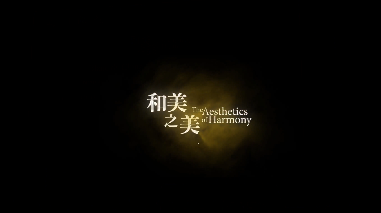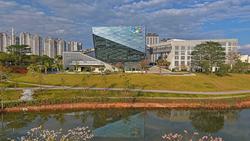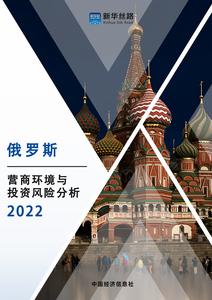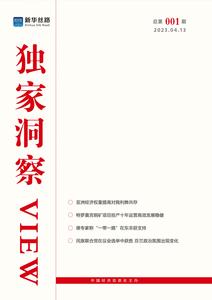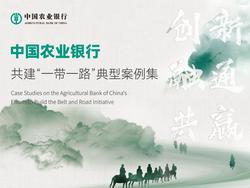(This text material is for reference only.)
"Under the endless sky, herds of cowsand sheep are idling around the wild grassland."
As the old song illustrates, nomads live afreewheeling lifestyle on the prairie. And this is a common sight in Ordos, asouthwestern city in North China's Inner Mongolia Autonomous Region.
Embraced by the Yellow River andneighbouring Ningxia Hui Autonomous Region, Shaanxi and Shanxi provinces, thecity covers an area of 87,000 square kilometres, including one district andseven banners - administrative divisions at a county level in the InnerMongolia Autonomous Region.
It has a population of 1.4 million, withMongolians as the majority ethnic group.
Ordos means "many palaces" inMongolian. It is seen as one of the sources of civilization, where variouscultures, including those of the Xiongnu (or Hun), the Xixia, the Mongolian andthe Han met in history, leaving a myriad of rich cultural legacies admired byvisitors in contemporary days.
At present, the city has five keyhistorical relic sites.
In Ordos lies the tomb of Genghis Khan, afamous ancient emperor, who led his Mongolian cavalries in a march across theEuropean and Asian continents and established the biggest empire at that time.For centuries, his tomb has been guarded and worshipped by the Mongolians as ashrine.
Legends say that Wang Zhaojun, a beautifulwoman in the Han Dynasty (206BC-24AD), whose marriage to a chief of a nomadictribe brought the end to a war, was also buried in the city.
Relics of Tongwan City, which was built byhundreds of thousands of Xiongnu people nearly 1,600 years ago, is anotherattraction.
According to historical records, workersused a mixture of white limestone powder and clay as construction materials toenhance the building, in a similar way to what we do today through usingconcrete.
The work lasted six years and was laterdestroyed in a war. However, its remains turned out to be the only city relicsleft by the Xiongnu ethnic group.
Other cultural heritage includes TibetanBuddhist-style temples, ancient grottoes with paintings and sculptures, ruinsof a straight alley of the Qin Dynasty (221BC-206BC), historical sites of OrdosBronze Culture, and stretches of the Great Wall. They all appeal to tourists.
Wandering around these historical sites inOrdos, which witnessed the ups and downs of the grassland tribes, visitors willbe taken back in time.
Strong Mongolian-flavoured dances and songsprovide a glimpse of the characters of the valiant grassland people.
Appreciating the local arts and preservedethnic customs, visitors will gain more understanding of the nomadic life.
The colourful cultural fruits are grown outof the grassland region.
Natural scenes such as rolling grass, sandlakes, hot springs, a grand ravine and an echoing sand resort offer visitors aunique experience.
Ordos is particularly recognized as animportant habitat to relict gulls, which are an endangered bird species aroundthe world.
Because of its magnificent grasslandlandscape, preserved cultural heritage and distinct ethnic customs, Ordos hasemerged as a tempting tourist destination in recent years.
According to local statistics, the cityreceived 3.1 million tourists from home and abroad in 2005.
And the city's tourism sector achieved atotal revenue of 1.86 billion yuan (US$232.5 million).
The upcoming tourism event, the third ChinaInner Mongolia International Grassland Cultural Festival, which will take placein Ordos in August, will again put the city in the limelight.
Energy base
Ordos is endowed with a variety of naturalresources, including coal, natural gas, trona, salt, gypsum, limestone andkaolin. It is one of the bases of energy and textiles in the country.
Figures show that the city has more than 50kinds of mineral deposits.
The proved coal reserves reached 124.4billion tons, accounting for about one sixth of the country's total.
The coal output of the city stood at 150million tons in 2005, ranking top among Chinese cities.
The proved natural gas reserves in the cityroughly account for one third of the country's total.
Suli Natural Gas Field, situated in Ordos,is one of the biggest gas fields in the country. Its proved reserve was postedat 750.4 billion cubic metres.
Capitalizing on the resources, Ordosfocuses on the development of energy, textiles, biological pharmaceuticals, newmaterials, autos, commerce and trade.
Erdos Corp, a leading Chinese cashmereproduct maker, has its headquarters there, so Ordos is becoming a wool industrycentre in the country.
The city has now grown into one of the mostdynamic economies in the Inner Mongolia Autonomous Region.
Its gross domestic product (GDP) exceeded55 billion yuan (US$6.9 billion) in 2005 and per capita GDP reached US$4,600.
During the 11th Five-Year Plan period(2006-10), the municipal government plans to build three energy industrialbases, respectively, with a designed production capacity of 200 million tons ofcoal, 15 million kilowatts of power and 10 million tons of chemicals.
The resource-rich and vigorous region hasstarted to receive attention from investors.
Ordos signed eight agreements with acombined investment value of 116 billion yuan (US$14.5 billion) at aninvestment fair held in Hong Kong last year.



